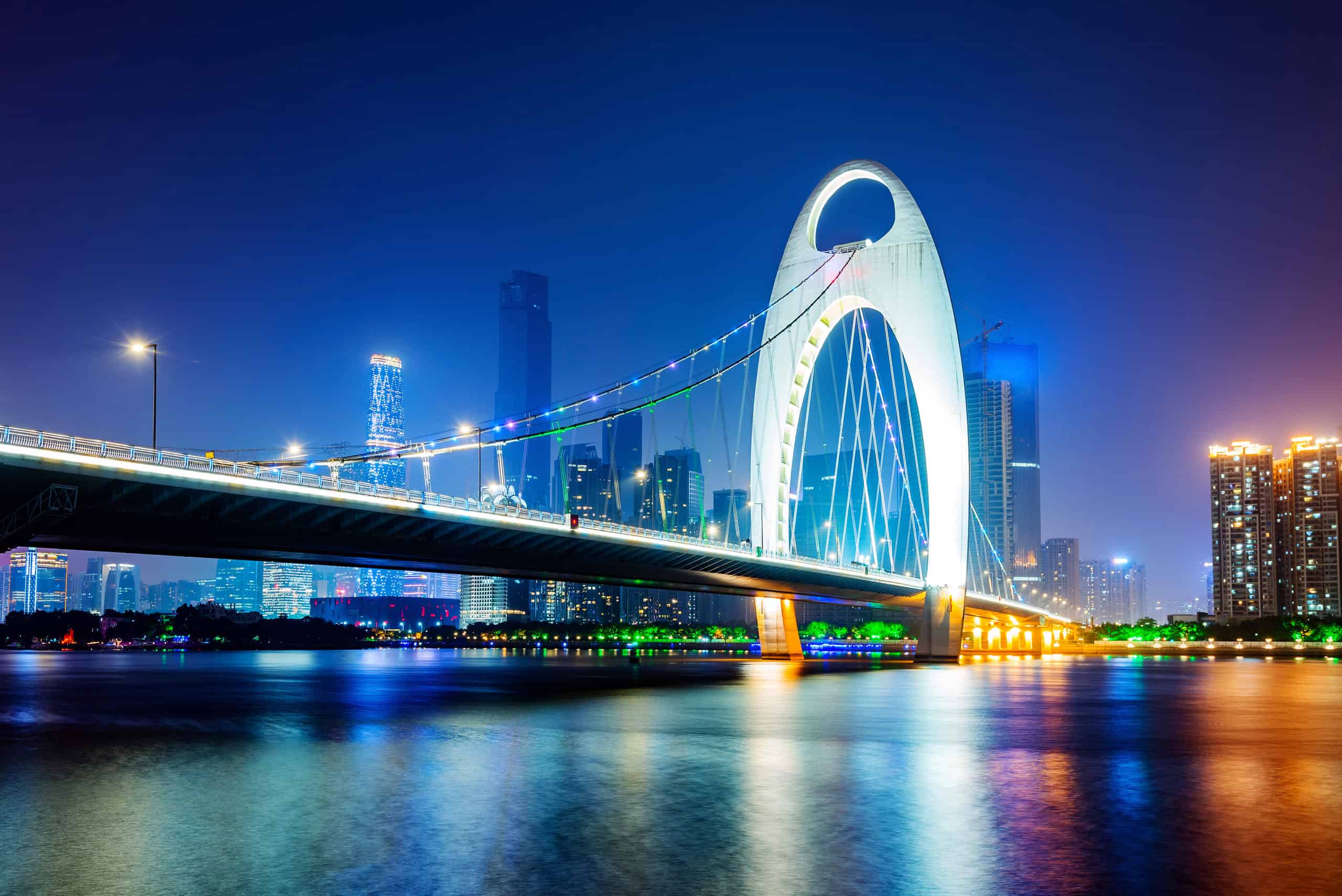- Many of China’s cities have very sleek contemporary architecture.
- China has constructed several entirely new cities from scratch in the past few decades.
- These cities are called “new areas.”
China is a complex nation that has influenced the rest of the world through the centuries in many different areas of life.
China has exerted massive influence in the arts, cuisine, politics, and health and wellness. As the 21st century progresses, the country seems poised to become one of the world’s superpowers, a status it shares with the United States.
China’s massive economic boom and forward-thinking administration have resulted in an explosion of new development. If you’re interested in China’s development, look at this list of some of the country’s most futuristic-seeming cities.
1. Shanghai
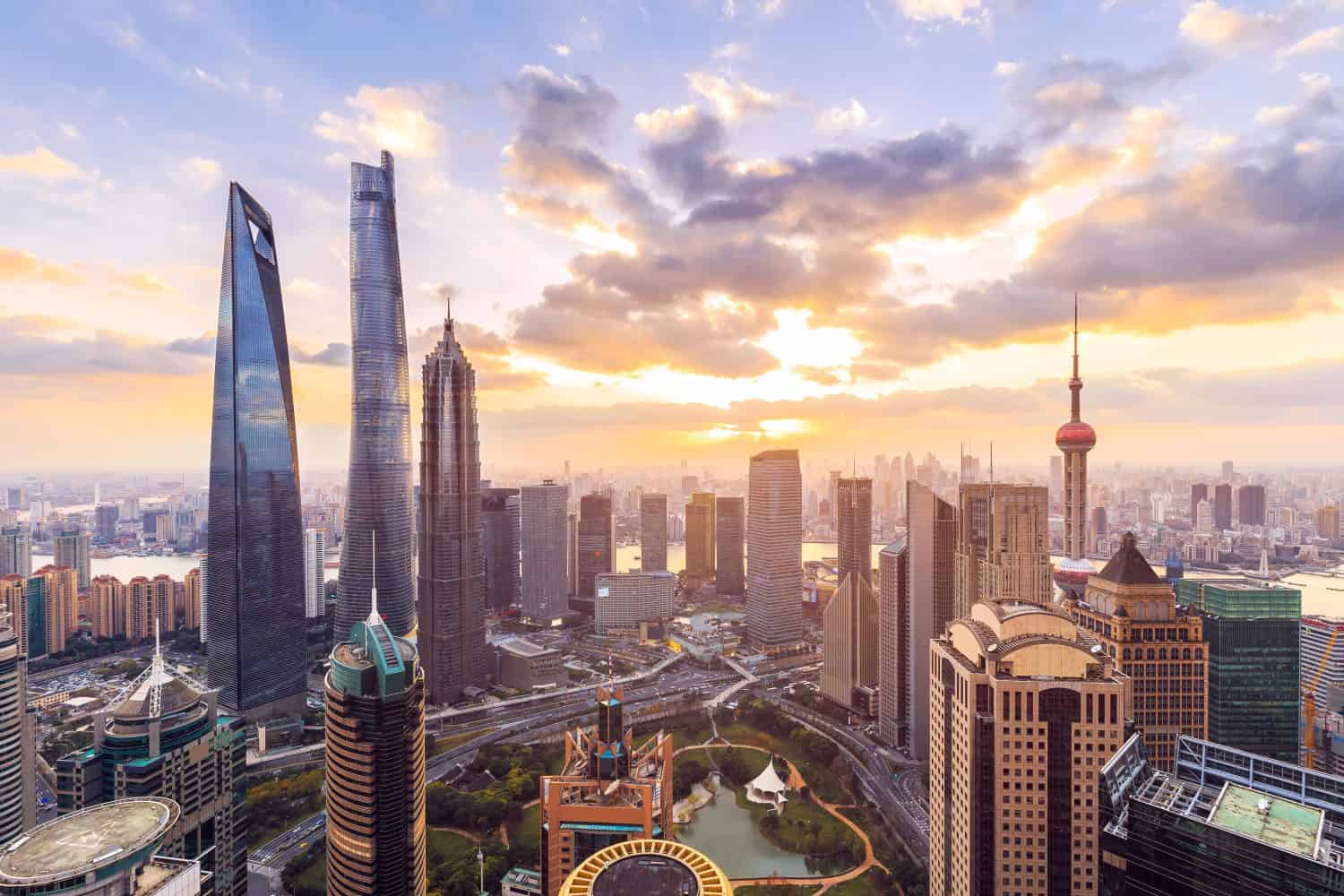
Downtown Shanghai at dusk. Shanghai is one of the world’s largest cities.
©Eugene Lu/Shutterstock.com
Shanghai is the most populous city in China and one of the most densely populated in the world. It is also the country’s financial capital. This dense concentration of wealth and innovation is evident in its impressive skyline. In many ways, Shanghai offers a glimpse into the future as cities transform into megacities.
Central in this skyline is the Shanghai Tower, one of the tallest buildings in the world. At night, this tower lights up in a pastiche of neon, along with many other buildings on the skyline. Other tall skyscrapers include the Jin Mao Tower, the Shanghai World Financial Center, and the Oriental Pearl Tower.
The Shanghai Metro system is the longest in the world. The Shanghai Maglev Train, a high-speed rail network, is the world’s first and fastest high-speed rail system. In addition, Shanghai’s bus network is the most extensive in the world.
2. Guangzhou

Guangzhou’s futuristic CBD at night.
©Coleman photographer/Shutterstock.com
This entry is the third-largest city in China, after Shanghai and Beijing. This megacity is the world’s largest active port and sees more commercial maritime activity than anywhere else.
The Guangzhou metropolitan area has a population of over 18 million. Guangzhou is one of China’s major centers for innovation and research. It is home to many of the country’s most prestigious universities.
The Canton Tower dominates the Guangzhou skyline. This multi-use building is open to tourists, who can ascend to enjoy views of the surrounding valley and check out the stars above the city. The original purpose of this tower was as an astronomical observation deck.
3. Chonqing

Chongqing’s Qiansimen Bridge leads into the CBD.
©gyn9037/Shutterstock.com
Chongqing is the largest city in Western China and the fourth largest in the country. This megacity also claims to be the “largest” city globally if you measure it by its technical borders.
Numerous buildings in Chongqing exemplify the city’s economic and cultural boom over the past few decades. Some that come to mind include the Chongqing Art Museum, the Qiansimen Bridge, and the Jiefangbei CBD.
The Chongqing Grand Theater is another Chonqing cultural institution with futuristic, forward-thinking architecture. At night, its building lights up in brilliant LED displays. Also of interest is the Baiheliang Underwater Museum, China’s first underwater museum.
4. Hong Kong

A view of the world’s densest amount of skyscrapers.
©EarnestTse/Shutterstock.com
Hong Kong is technically its own administrative division, one of the busiest ports in China and the world. This means that the port city can self-govern separately from the rest of China, which the PRC governs. Several of these Chinese satellite states are worldwide – another example is Macao.
Hong Kong is one of the most densely populated places in the world, squeezing 7.5 million residents into just 426 square miles. The city is an economic and cultural heavyweight in the global arena.
The Hong Kong skyline claims to have the largest number of skyscrapers worldwide. All in all, 550 buildings in Hong Kong are skyscrapers. This is more than 200 more than Manhattan, which occupies third place.
5. Tianjin
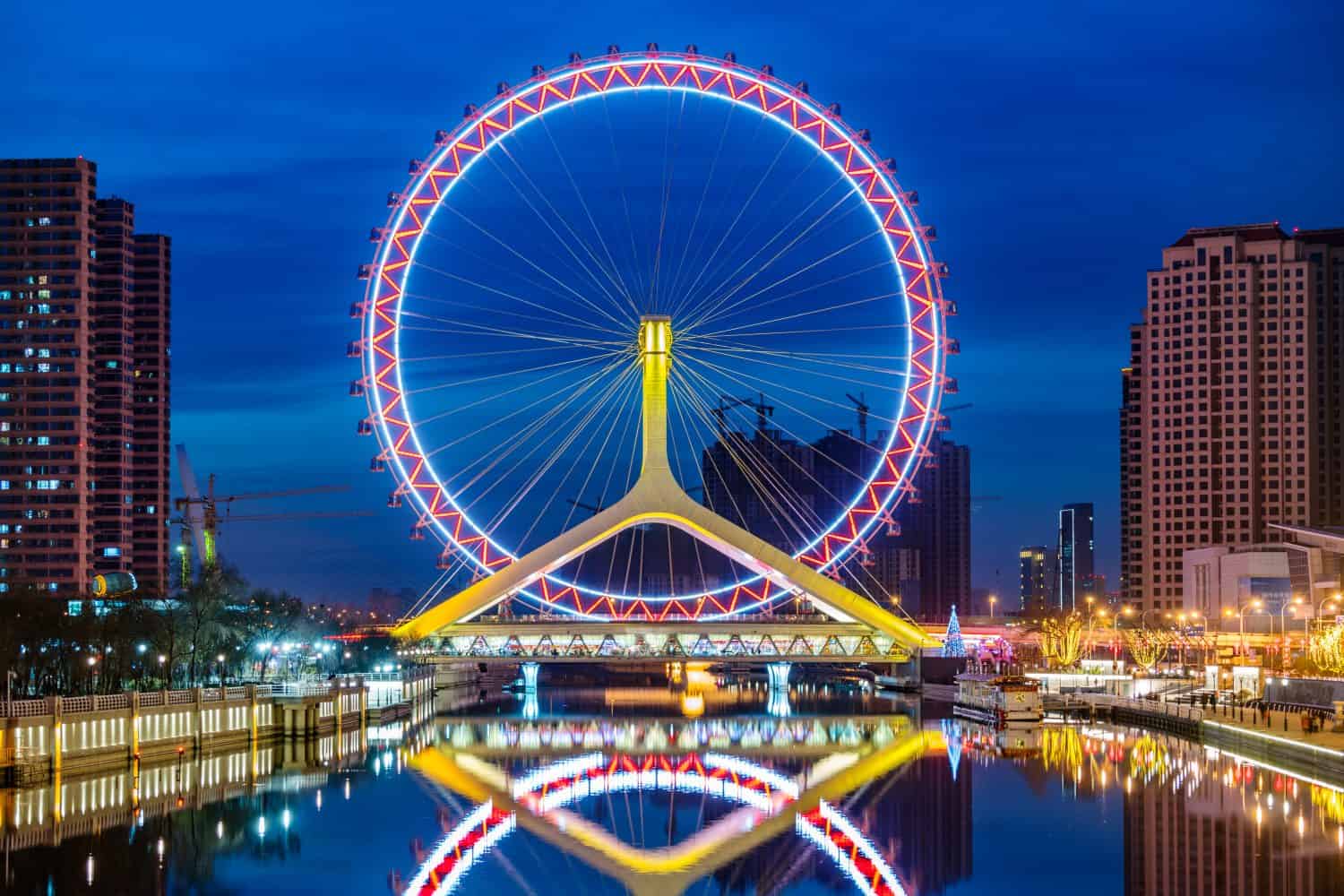
The Tianjin Eye fixated over the Hai River.
©sensen/Shutterstock.com
Tianjin is a city in China that combines elements of the past and the future. It is one of the world’s top centers for science, technology, and research, and many of the best universities in China are within its borders.
Tianjin is part of a larger megalopolis urban center called the Jing-Jin-Ji megapolis. This massive conglomeration of populations is primarily composed of the extended urban centers of Tianjin and Beijing. This massive spread of urbanity is served by four high-speed railway systems, six national highways, and eight major expressways.
In addition, there are two intercity railways and four additional high-speed rail lines. These connect the megapolis to other cities in China. That’s a lot of public infrastructure!
6. Xiong’an
Xiong’an is one of China’s cities constructed entirely to hypothetically predict how cities might appear and function in the near future. In that way, the city might be the most futuristic on this list.
Xiongan has existed since 2017. The main purpose of this “new area,” as the Chinese government calls it, is to serve as an administration hub of the ever-growing Tianjin-Beijing megapolis. This is the urban center mentioned in the previous post.
Central to this surreal new development complex is the futuristic Xiong’an railway station, which connects the new area to other parts of the megapolis. Xiong’an may offer some insight into how new administration centers will develop to serve ever more complex conglomerations of urbanity in decades to come.
7. Zhengzhou
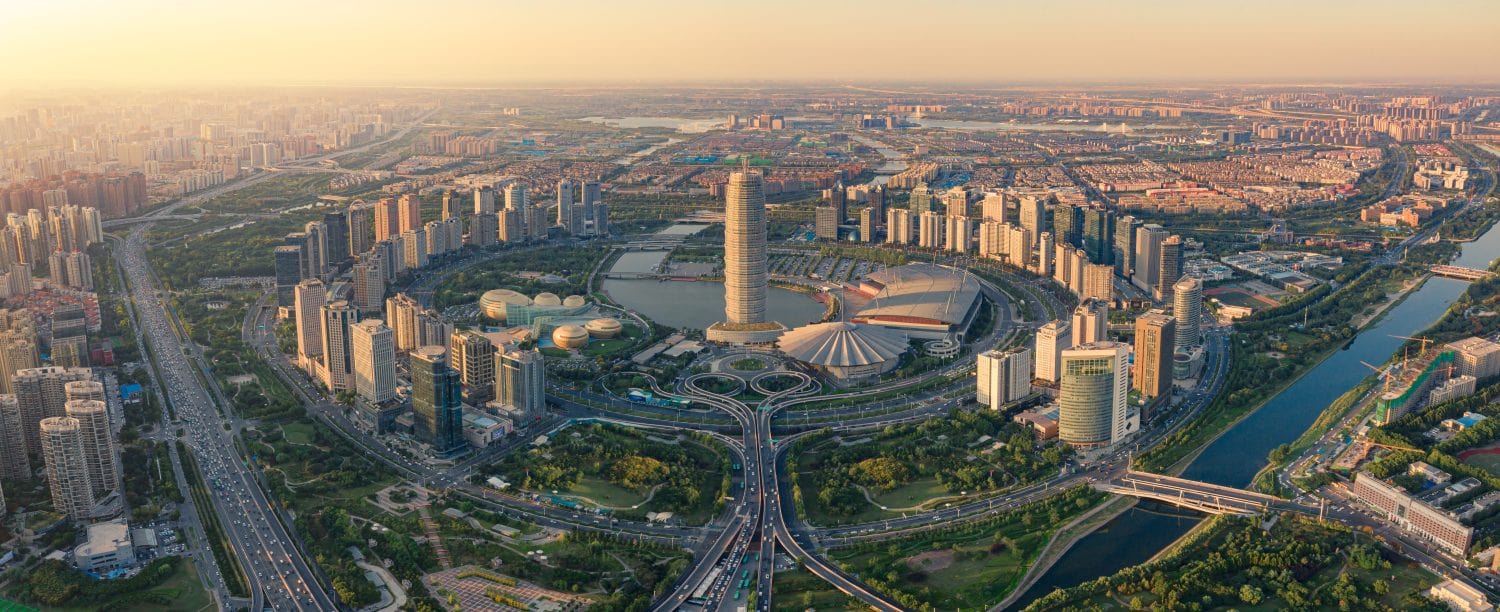
The circular CBD of Zhengzhou.
©WenPhoto/Shutterstock.com
Zhengzhou is the political and technological center of Henan Province, which is in the country’s Central Plains region. Zhengzhou is also a major center for scientific research, and its infrastructure reflects this.
Nowhere is this more apparent than in the Zhengdong New Area CBD. This fascinating new area features skyscrapers constructed in a circle around a central node. This massive new area was projected to become a ghost city when it was first developed. The world media wrote the project off as a failure.
However, the years have proved the contrary to be accurate, as new residents have flocked to the new area. The permanent population of this region is now over 1 million. This rapid growth has occurred in just ten years.
8. Changsha
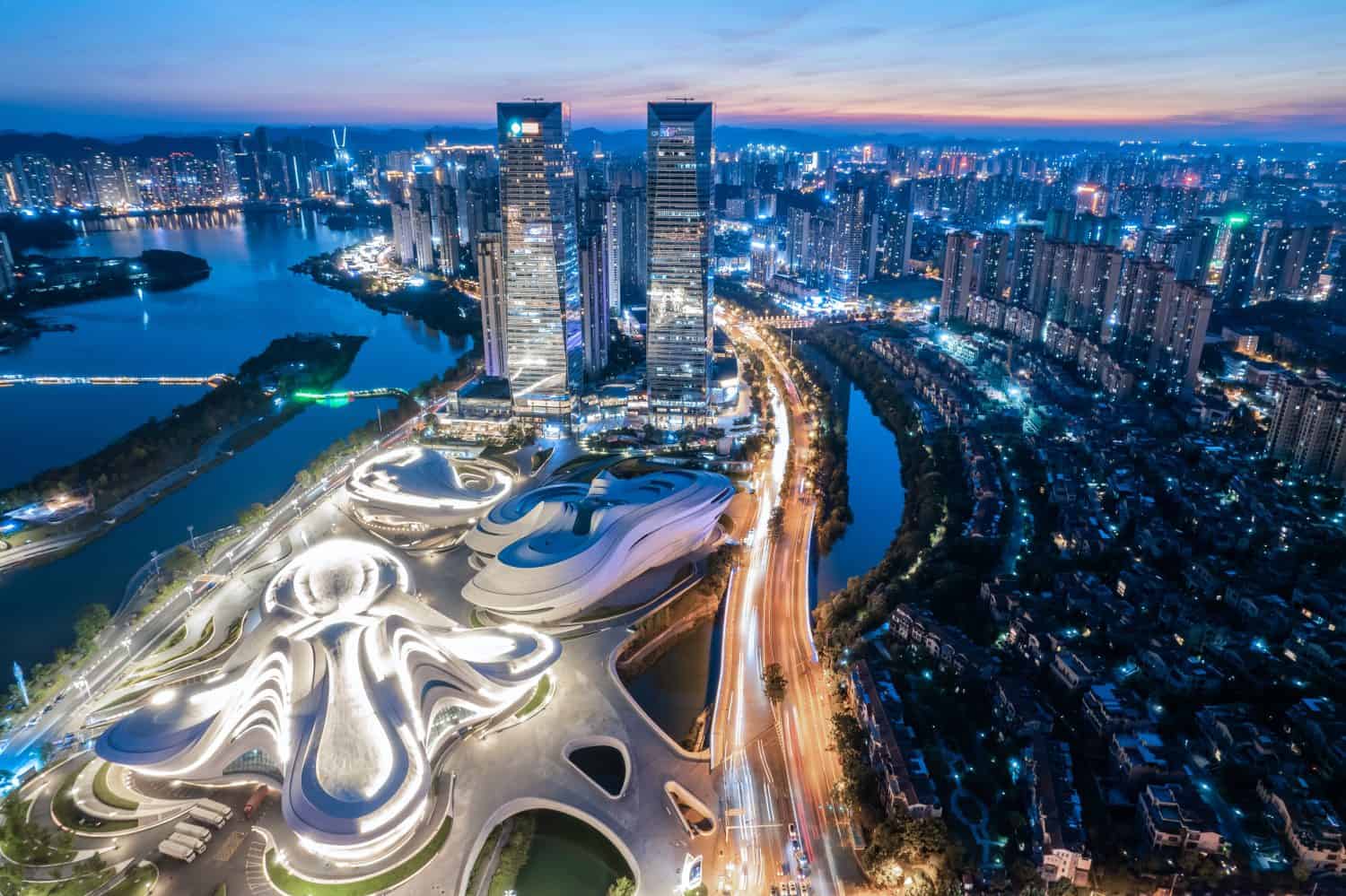
An overhead view of Changsha and some of its forward-thinking architecture.
©Lili.Q/Shutterstock.com
Changsha is a large city in central-southeast China with several interesting cultural and economic institutions. In addition, the city has had many firsts in China, including the country’s first supercomputer and first domestic maglev line.
Changsha is a UNESCO City of Media Arts, owing to its strong performing and media arts investments. The Xiangjiang New Area, one of China’s rapidly developing new areas, exists within its borders.
Notable examples of forward-thinking architecture in Changsha include the Meixihu International Culture & Arts Center and the Changsha IFS.
9. Suzhou
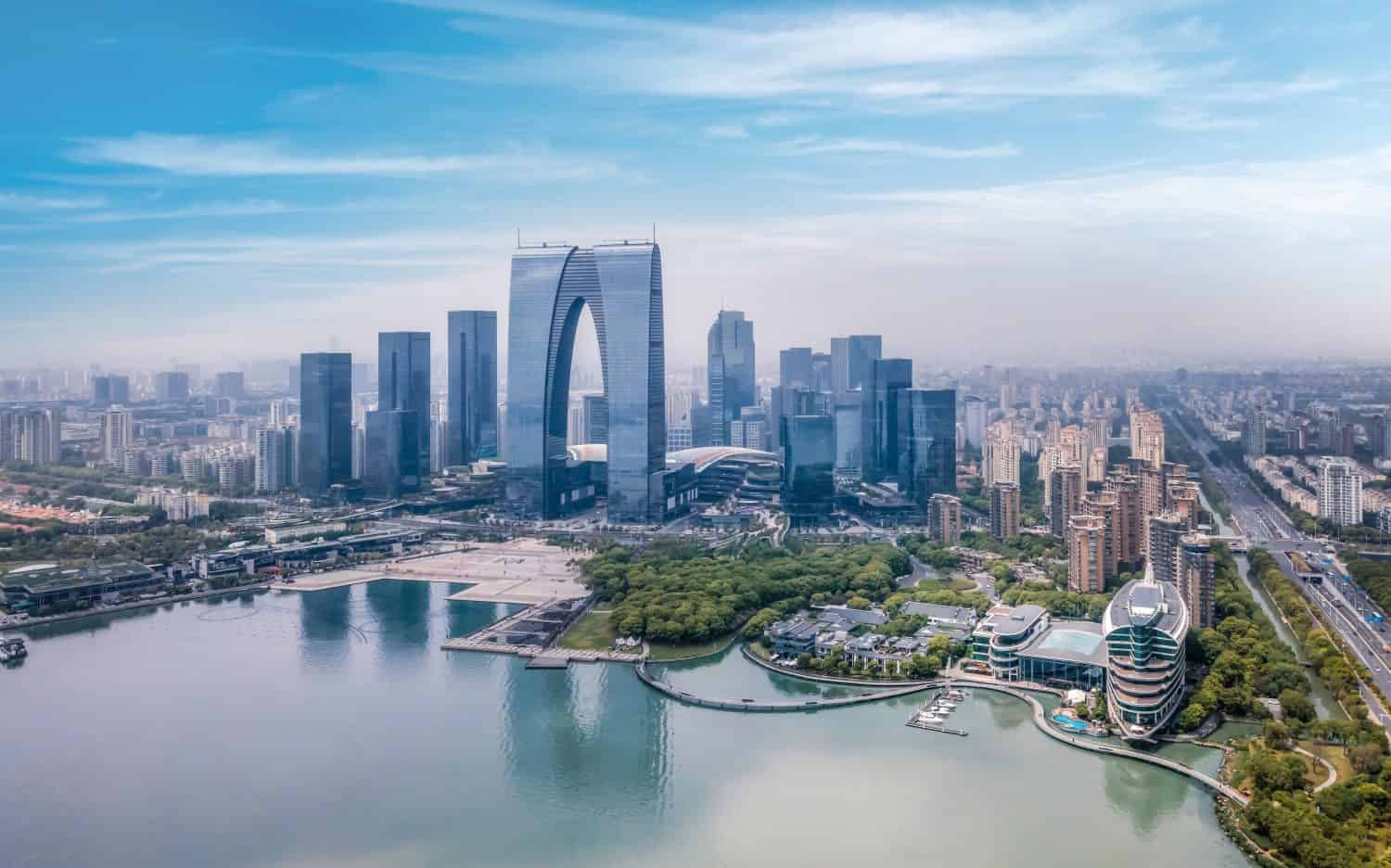
Suzhou and the massive Gate to the East.
©4045/Shutterstock.com
This is the most populous city in the southern Jiangsu province. This city ranks in the top 50 in the world in terms of scientific research. The beautiful construction of the city and its lack of air pollution and congestion have contributed to it being named “The Venice of the East.”
This entry is another Chinese city that displays an exciting interplay between historic architecture and futuristic qualities. The Gate to the East, a massive building in the city’s Industrial Park, exemplifies this by displaying a traditional concept utilizing new architecture.
It also has some new area development going on in its borders. Some examples include the Suzhou HSR New Town, which exists to capture some of the city’s blossoming population.
10. Wuhan

Downtown Wuhan during a sunset.
©sleepingpanda/Shutterstock.com
Wuhan is internationally famous nowadays. This is because the city became a household name as the epicenter of the COVID-19 pandemic that shook the world for several years. However, there’s much more to Wuhan than just this recent history.
Wuhan is a designated UNESCO Creative City and a major science and research center. The massive Yellow Crane Tower dominates its skyline. The city has five major industrial parks, each dedicated to a different science specialty.
Perhaps the most futuristic is the Wuhan National Bioindustry Base or Biolake. This complex of research facilities is part of the larger “Optics Valley of China,” a global center for optical science development.
11. Chengdu

Some examples of the hyper-modern architecture of Chengdu.
©4045/Shutterstock.com
Chengdu is a massive megacity and the capital of Sichuan province, one of China’s most populous provinces. It is an important economic and financial center and home to the largest number of universities in the country.
The sprawling Chengdu has many different urban centers and subdivisions. The Tianfu New Area is one of China’s many new area projects and one of the largest. The Sin-Ocean Taikoo Li Chengdu is a massive commercial center that covers over 2.86 million square feet.
In many ways, Chengdu is one of China’s cultural and artistic hubs. Many of China’s most important contemporary novelists hail from Chengdu, and its version of Sichuan cuisine is one of the most popular in the world.
12. Hefei
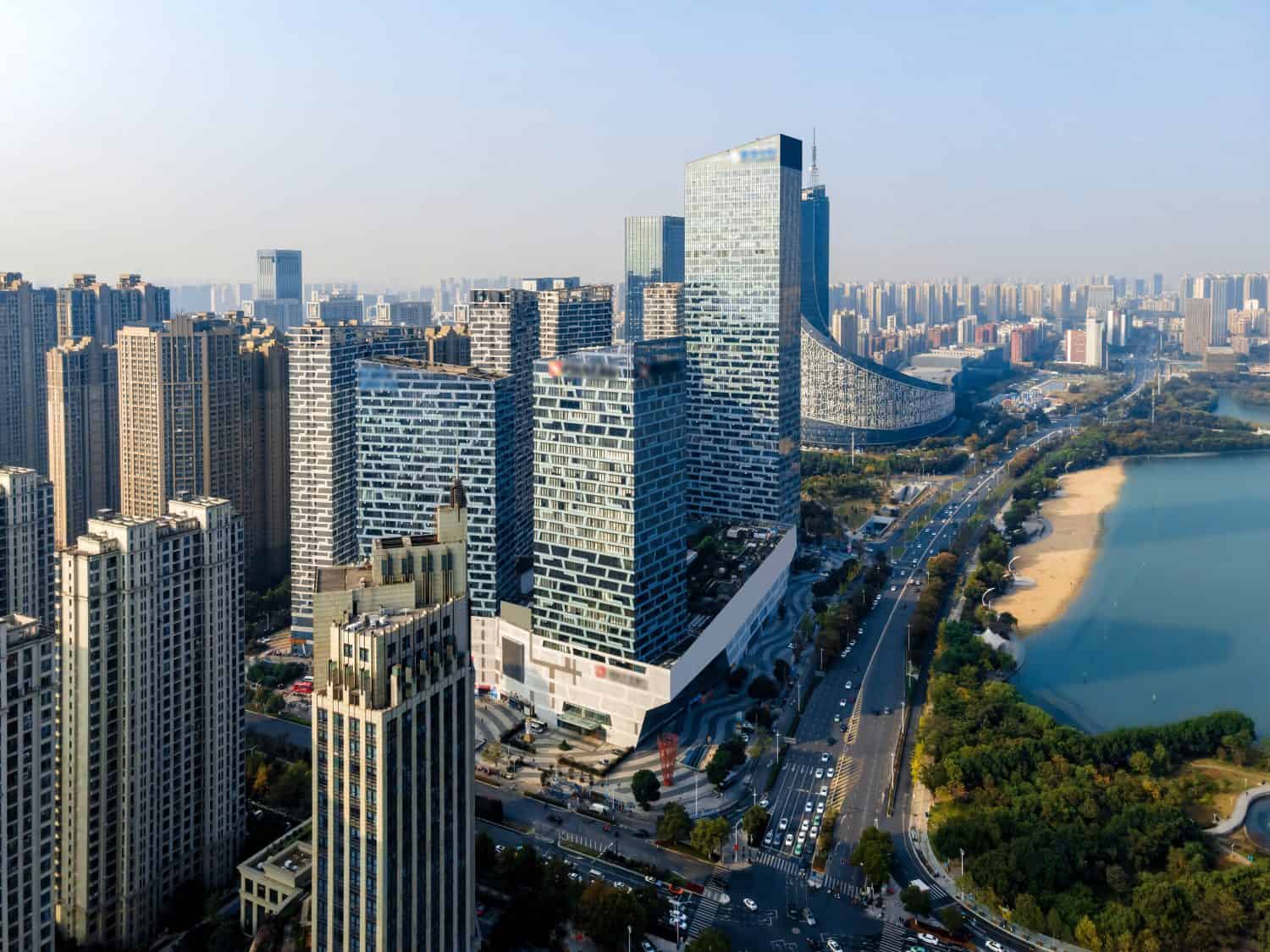
Hefei is home to some cutting-edge science and technology.
©4045/Shutterstock.com
This city is the capital of the Anhui Province of China. This city is another science and research powerhouse in the country. It is also home to many of the technical and science research facilities in this part of China.
One exciting project happening now in Hefei that could have come from the mind of a science fiction author is the Experimental Advanced Superconducting Tokamak. This is an experimental superconductor tokamak magnetic fusion energy reactor.
A Tokamak is a device that uses the power of magnetic fields to attempt to confine plasma to create fusion energy. If that goes over your head as it did mine, know that nuclear fusion may represent the next step forward for the development of mankind’s energy needs.
13. Beijing
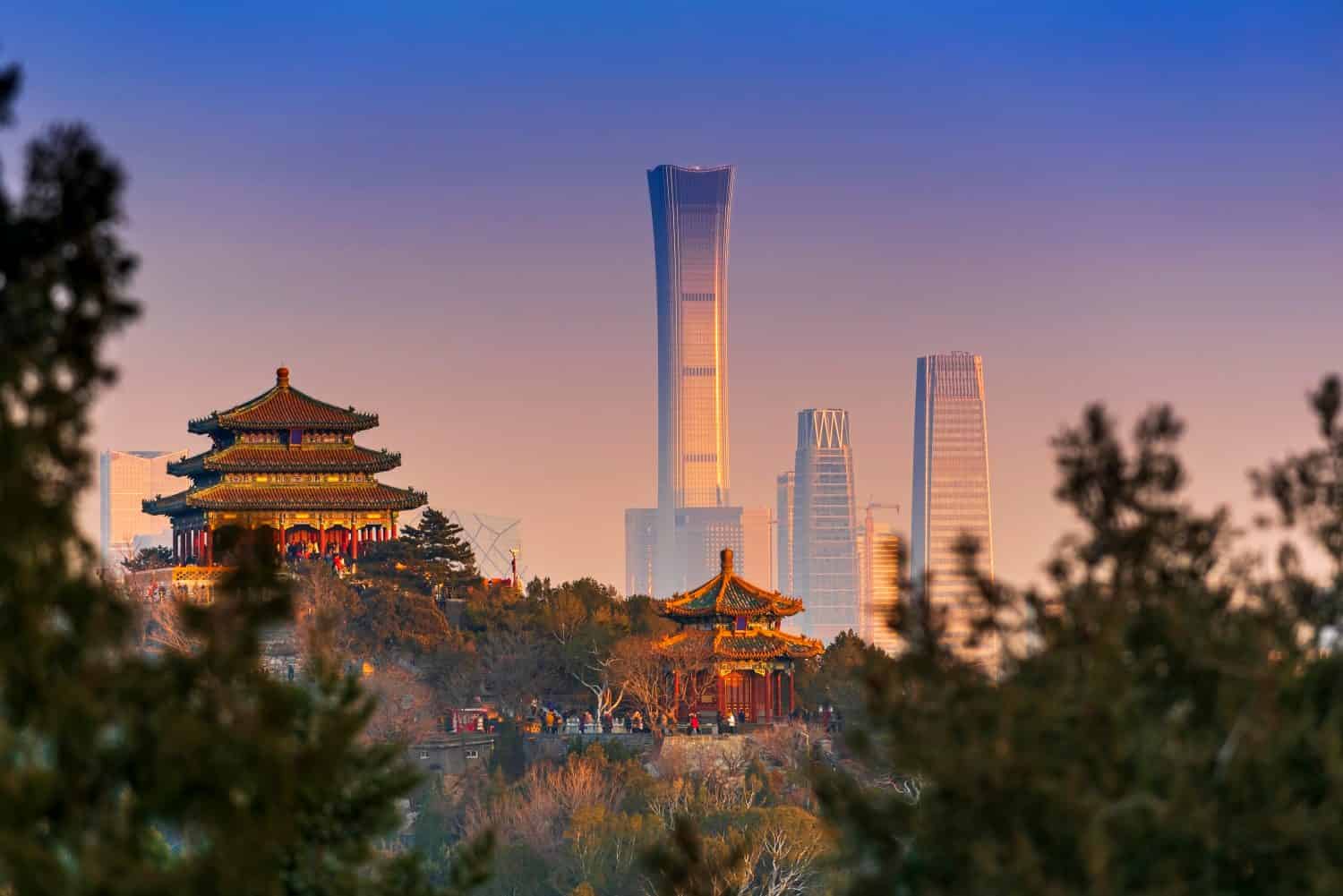
The old and the new intersperse freely in Beijing.
©iamlukyeee/Shutterstock.com
Beijing is the capital of China and its second-most populated city after Shanghai. It packs a lot of history into its borders but also has some new developments that suggest how it might develop. As the political center of China, Beijing is one of the most influential cities in the world.
Beijing has the largest number of Fortune 500 companies within its borders. Even though the city is one of the oldest continuously inhabited places in the world, it has nevertheless experienced massive population and development booms in the past few decades.
Some examples of the new developments in Beijing include its CBD district, which hosts a huge number of skyscrapers, monuments, and museums. One particular example of futuristic architecture in new Beijing is the Wangjing SOHO. This wild building features three separate skyscrapers shaped somewhat like beehives.
14. Hangzhou

Hangzhou’s CBD and the conspicuous Golden Egg.
©snvv18870020330/Shutterstock.com
Hangzhou is the second-largest city in the Yangtze Delta region after Shanghai. This massive city is one of China’s tech and science centers and hosts many notable universities.
Hangzhou is home to the Qianjiang New City, one of China’s largest and most intricate New Cities. This new city is one of the larger area’s two primary central business districts. The distinctive “Golden Egg” building, opposite the moon-shaped Hangzhou Grand Theatre, is central to this region’s architecture.
Hangzhou is one of the places in China that has developed rapidly since the beginning of the 21st century. Its GDP has reportedly tripled since 2001, and it has an economy larger than Argentina’s and Nigeria’s.
15. Jiujiang
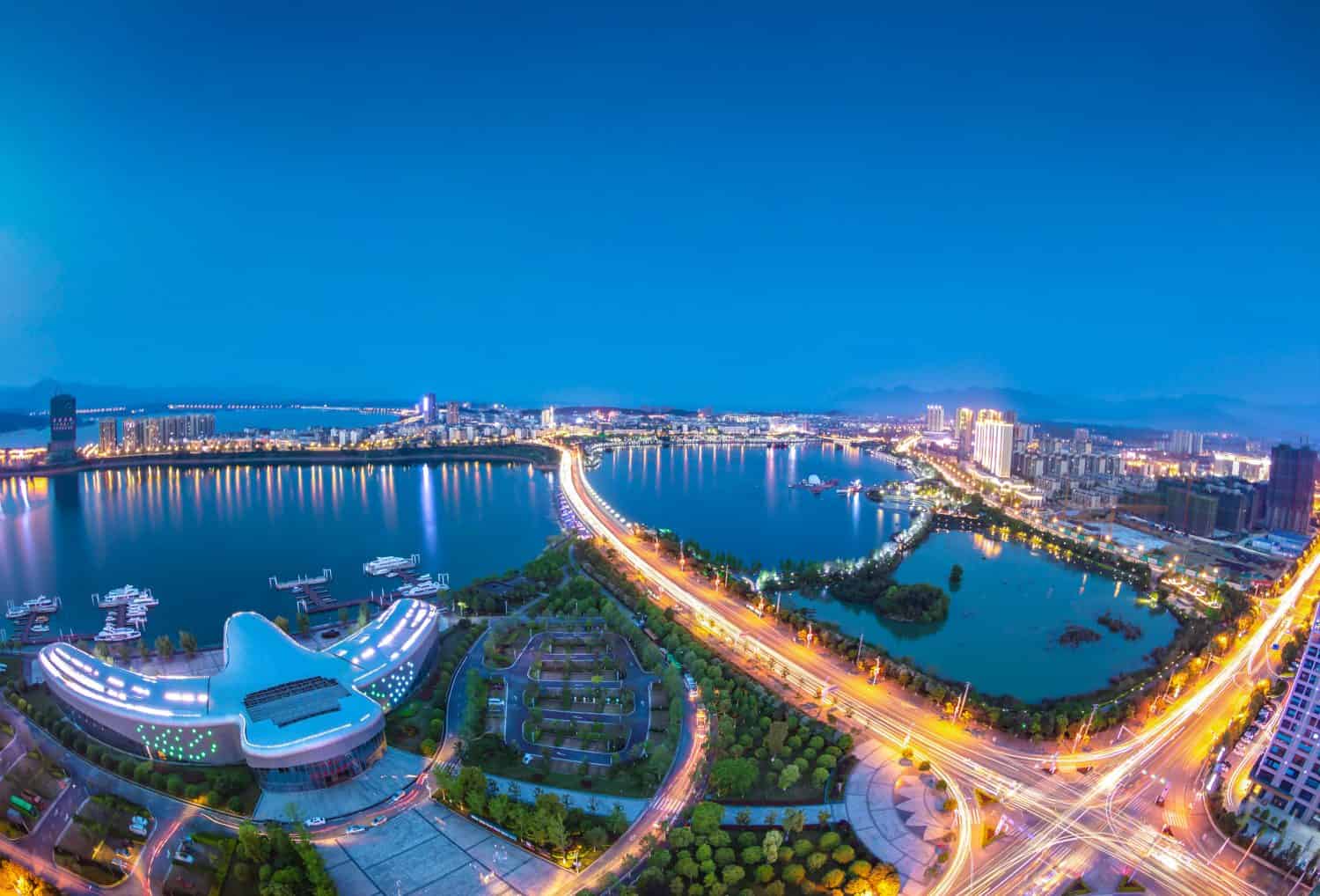
Jiujiang is thought of by some to be one of China’s prettiest cities.
©humphery/Shutterstock.com
This entry is very modestly sized compared to many of the cities in China. At only 4,000,000 people, it’s practically pint-sized compared to some of the megapolis’s on the rest of this list. However, with a population like that, it would technically still be the second-largest city in the United States after New York.
The city is a National Historical and Cultural City in China. This is for its colorful history and importance to the prefecture that it’s located in. This city is also a major center for Manufacturing and Petrochemical development. The city has many rail systems that connect it to the rest of China.
16. Fuzhou
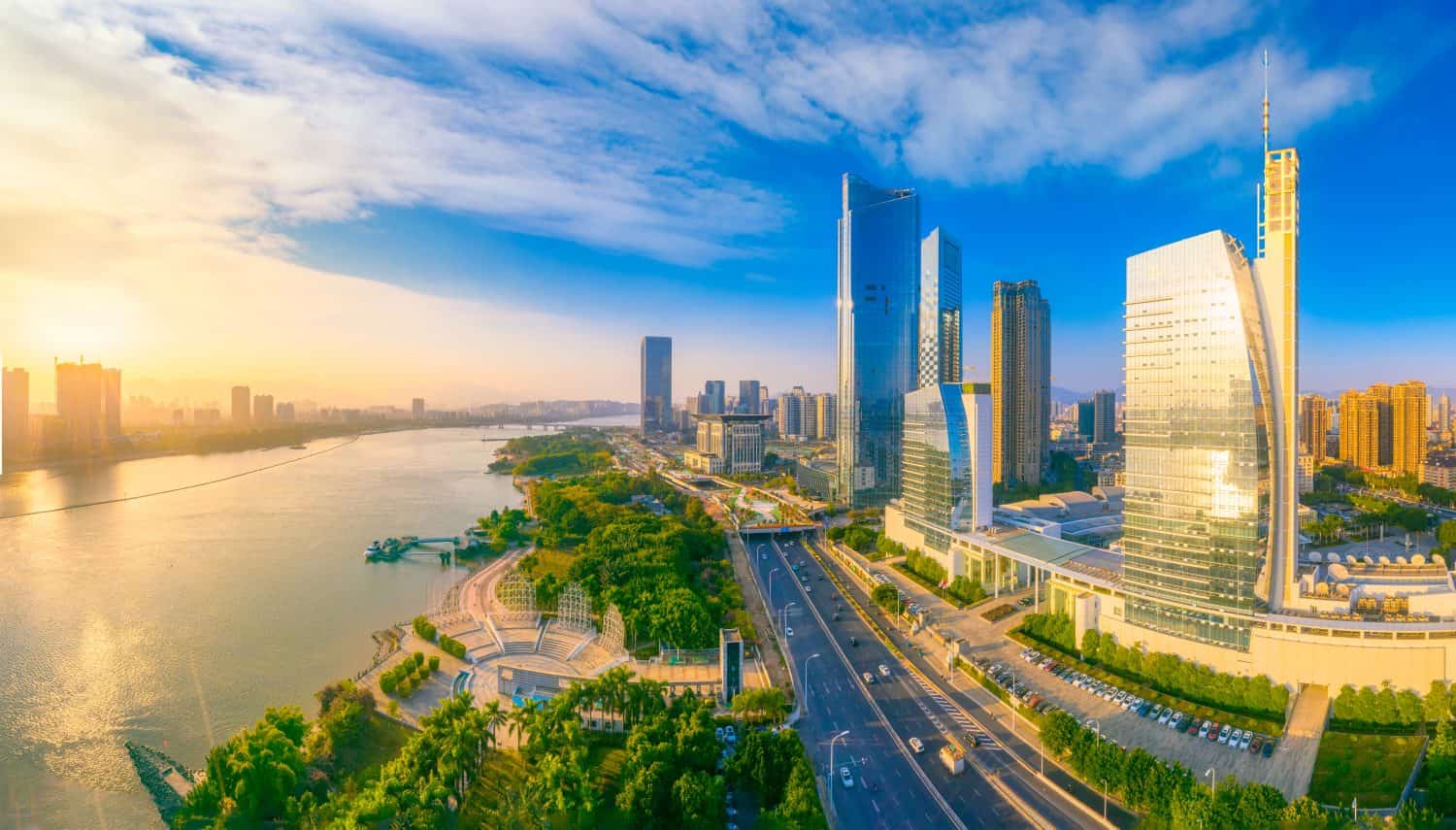
Fuzhou is one of the fastest-growing cities in China.
©Weiming Xie/Shutterstock.com
This place is one of the largest cities in the Fujian province of China. This city is a science and research center home to many of the country’s most prestigious universities. Overall, it is one of the fastest-growing urban areas in the world. It exemplifies the country’s push to urbanize and develop as quickly as possible in the 21st century.
The city has a diversified economy and seven separate economic zones dedicated to developing various industries. Fuzhou also has a bustling metro system, the first in the Fujian province. An intercity metro system connects it to other cities in China. In the future, other cities in China may experience even more rapid growth.
Summary of the 15 Most Futuristic Cities in China Look Straight Out of Sci-Fi
| Number | Name |
|---|---|
| 1 | Shanghai |
| 2 | Guangzhou |
| 3 | Chongqing |
| 4 | Hong Kong |
| 5 | Tianjin |
| 6 | Xiangan |
| 7 | Zhengzhou |
| 8 | Changsa |
| 9 | Suzhou |
| 10 | Wuhan |
| 11 | Chengdu |
| 12 | Hefei |
| 13 | Beijing |
| 14 | Hangzhou |
| 15 | Jiujiang |
| 16 | Fuzhou |
Thank you for reading! Have some feedback for us? Contact the AZ Animals editorial team.

